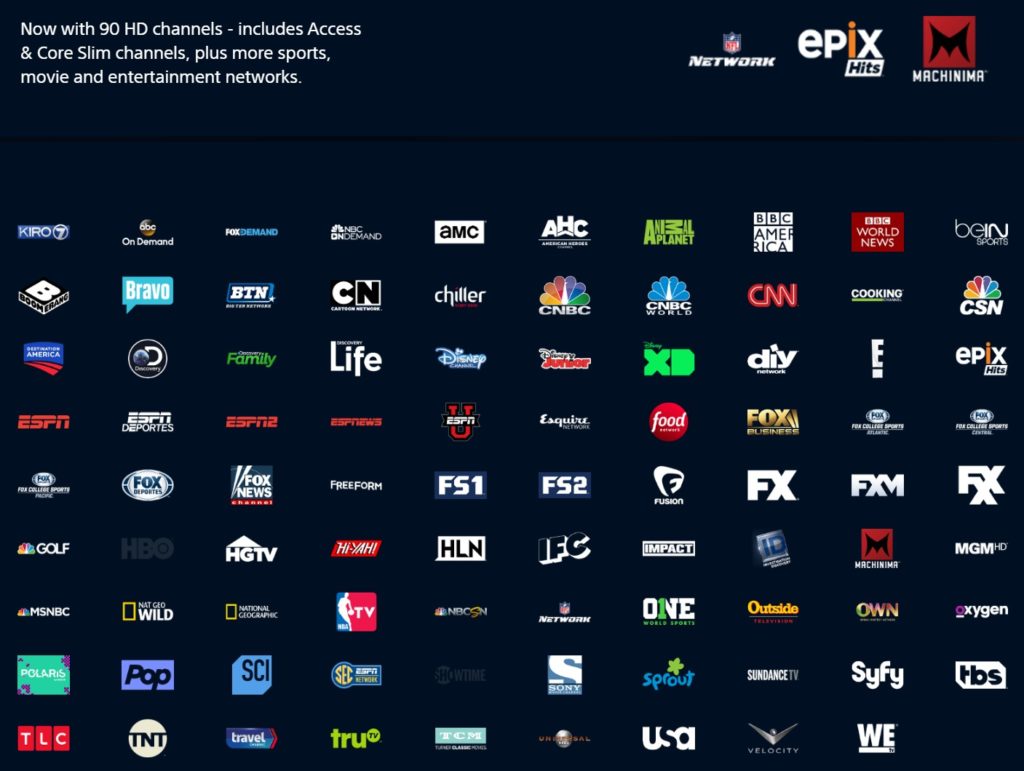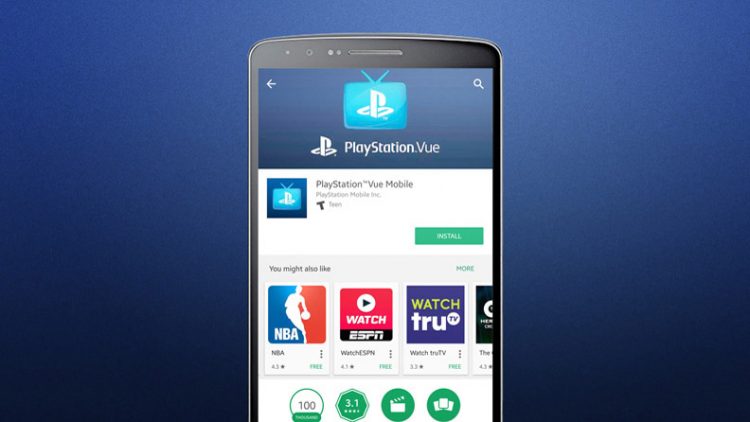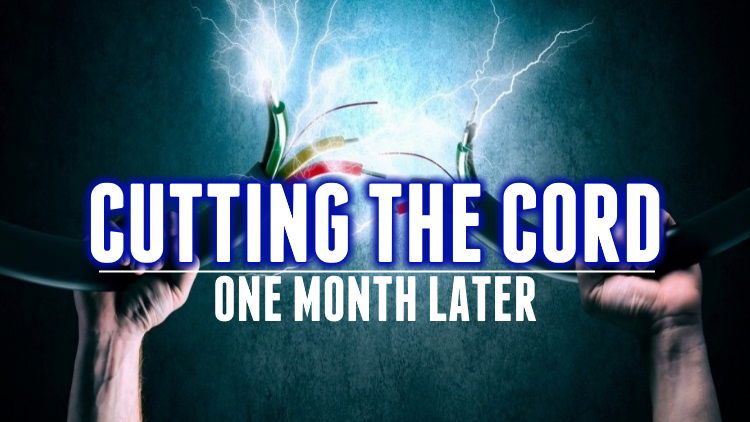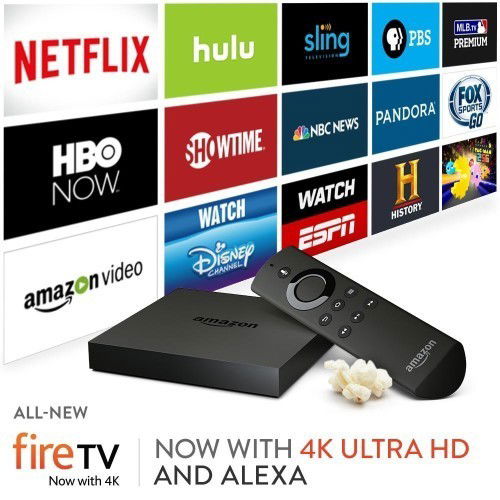This article is about my experience with “Cutting the Cord” and ditching my cable TV service. If you’ve ever thought about doing the same, read on.
About a month or so ago, I finally said to myself “I’ve had enough of my cable company robbing me blind”. And they literally were, as my cable bills would range between $220-$250 a month. This included my internet service (75Mbps up/down), an extreme TV package, phone service and of course, all those lovely taxes that get tacked on. I swear I was paying $30 in taxes at times – it was mildly frustrating, to say the least. Now, I had already been toying with various other services such as Hulu, Netflix, SlingTV and PlayStation Vue. All of which would be a good replacement for my cable services, I just had to put a plan of attack into place.
Of course, planning to remove my cable also presented a few obstacles that needed to be accounted for. The main issue is that I’m not the only one who watches TV in my home. I also have two children and my wife, who despite loving her to death, she’s not a fan of my technology charging changes in our home. I still recall when I decided to remove all of our optical players and replace them with Plex and a digital media server. But in the end, she ultimately fell in love with that, so I was betting on this happening with this as well. The second obstacle was the swapping all of our cable boxes with a suitable replacement streaming device and there quite a few of them.
Between the Apple TV, Roku, Amazon Fire TV (Box & Stick). I wanted something that would provide the same ability as the cable boxes I was removing, as well as providing other incentives. You want something that will integrate into your existing TV setup, entertainment system or what have you. You also want something that has either a physical controller, as well as one that allows you to use your mobile device such as a phone or tablet, in the event you lose or break your physical controller.
In the end, I settled for Amazon’s Fire TV’s, for several reasons. One, I had already had three of those devices in my house for my sons’ and daughters’ room, as well as one in my office. Normally they were used to watch Plex, Amazon Video, Netflix and a few others. It also didn’t hurt that I’ve been an Amazon Prime member for years, so I was already used to the eco-cycle. It also helped that I already had two of the FireTV Sticks and a FireTV set-top box. Meaning I only had to spend an additional $200 more to get the rest of our TV’s configured with the devices. Going forward they would be our dedicated TV devices as well.
Now that I had the hardware figured out, it was time to decide on which service I’d used to completely remove the cable from my home. Which ended up being easier than most people expect this part to be.
When looking to replace your cable box with a streaming service, you have to account for several things:
- Ease of use
- Shows you watch
- Features: DVR, show guides, rewind
- Pricing
In my case, I needed something that all of the members of my household could use. The replacement also needed features such as DVR, which is important to me, rewinding, show guides and anything else that you already have is a wise decision. And finally, the price is a factor. You don’t want to end up paying the same or more than you did with you were using the cable service. All of these factors came into the picture when I was looking to cut the cord. In the end, I went with Sony’s PlayStation Vue – here’s why.

Not only did PlayStation Vue have all the features that I wanted, it was priced competitively. For less than what I paid for with my cable service, I was getting the same changes, as well as DVR across all my TV’s, the ability to rewind shows, a listing guide and access to a vast amount of channels for just $54.99. I still have access to all my channels that I watched: ESPN, ABC, CBS, FX, HBO, Showtime, Cartoon Network, Boomerang, DisneyXD, HGTV and many others. Comparing that to the $100+ I was paying before, that was a win. Not to mention that I could access PlayStation Vue on not only the Amazon Fire devices but also my PlayStation 4, as well as my computers, tablet, and smartphone. It’s quite nice to be able to watch TV on my tablet and just get up and walk out to my front yard or backyard and lay on my hammock. It’s TV service on tap, whenever, wherever I wanted it.
I also looked at DirecTV and Hulu Live TV, both of which I would have also considered. However, the DirecTV DVR offering isn’t live as of yet and both services only allow you to use two streams at any time, where PlayStation Vue lets you use up to 5 streams. For a smaller home, this wouldn’t be an issue. But for me where my children could be watching something in their rooms, while the wife is in another room and I’m in my office, two streams wouldn’t cut it. Hopefully, both DirectTV and Hulu Live TV revisits those limits if that changes, I’ll be right there to give both of them a test drive.
Adding to this all, I also have a Hulu account that I pay $8 a month to supplement shows and movies that aren’t on PlayStation Vue. Stuff like CW and other Viacom programming. And as I’m using the Amazon FireTV devices, it’s all seamless. We just have to open up the app or just use the Alexa voice option and tell it to open them. It’s as easy as it sounds. That also means I’ve dropped Netflix for now but I’ll reevaluate the service in a few months, but for now, the family is enjoying Hulu.

So, I’ve got my hardware and service in play and have it like this for one billing cycle. Let me tell you that it was nice to see my updated cable service provider bill drop from $200+ to just under $100. For those wondering what it’s still over $100, I’m still paying for a landline and ISP services. No, I won’t be getting rid of my landline just yet. I’m still not a fan of depending on my smartphone for everything – and what happens if it gets stolen or broken?
A month later and the family has been enjoying the change. They have a wider range of shows to watch, they have access to shows that were recorded via the DVR and they like being able to watch something in one room, moving to another room and picking up where they left off thanks to the profile options. While I’m happier that my bills are vastly cheaper. Of course making the change presents some negatives as well. We’ve already seen networks leave PlayStation Vue and we have no idea what other networks could also leave. The setup of the boxes also adds more bandwidth stream on the wi-fi network, meaning I had to add a new router and put it into bridge mode to accommodate the traffic. Sadly, we’ve already have seen two Amazon FireTV remotes disappear into the voice – replacing them at $30 a pop ain’t cheap either.
Still, in the end, I’m satisfied with my new media consumption experience. Cheaper, slicker and something that I have more control over. If you’re thinking about making the change as well, I’ve provided a roadmap that you can follow. But before you jump in, make sure you consider everything that I pointed out. What may be simple for me, such as the wifi setup, and other technology changes, may not be easy for you. But if you ask me if it’s worth it, I’ll be more than happy to point out that it was.
*This was not a paid sponsored article. I just happen to enjoy the service.*




